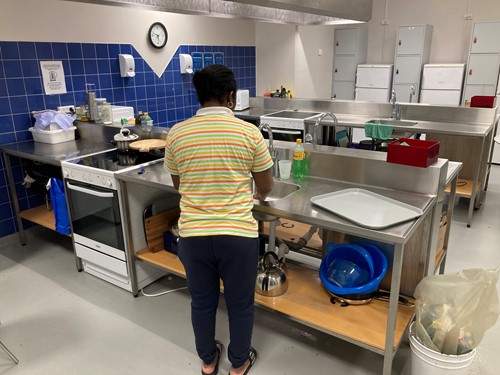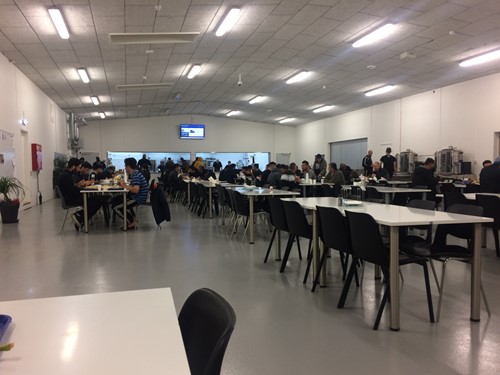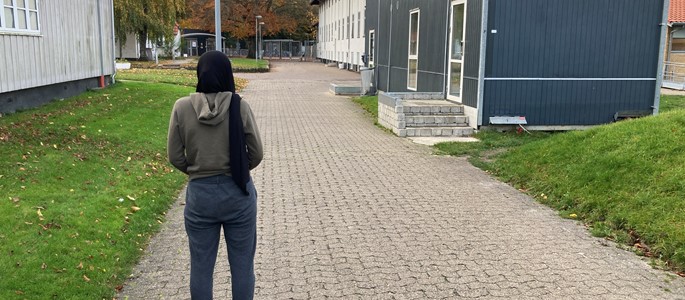Single women will move out of Kærshovedgård
It will be better for the women to live in Avnstrup, but new recommendations from DRC Danish Refugee Council emphasise that the conditions in Kærshovedgård should be changed for all residents
It was already stated in the government manifesto from 2022 that a better solution should be found for the few single women who have so far been forced to live at the deportation centre Kærshovedgård. Now the Minister for Immigration and Integration has finally decided that the women should be moved to the deportation centre Avnstrup, which is otherwise reserved for families and women with children.
Insecurity and abuse
This allegedly happens after a series of cases of sexual abuse and harassment, which we also described in our report from last year "They don’t know how much stress we have" about women in the asylum and integration system, which contains a whole section about the women at Kærshovedgård. When we wrote the report, there were 23 women living there. Today there are 15 women, but only 12 are moving. The remaining 3 have their husbands and adult son at Kærshovedgård respectively. They will now have an even harder time without the company of the other women.
One of the recommendations in our report is to design asylum and deportation centres with more focus on women’s safety. Generally, women feel unsafe in the large, mixed centres where they are always a clear minority. In Avnstrup, however, two corridors have recently been arranged exclusively for women and children, which are locked. This has made the women feel safer, and hopefully, the single women from Kærshovedgård will also be allowed to move into a locked corridor.

Kitchen at Avnstrup’s women’s corridor
Difference between deportation centres
The design and atmosphere in the two centres are very different. Both Kærshovedgård and Avnstrup are deportation centres, specifically designed for asylum seekers who have been denied asylum. This means that they have to live under very strict rules, where they receive no benefits, are not offered any activities, and have a daily obligation to stay and report.
Avnstrup, located in Lejre Municipality, is run by the Red Cross, and a bus stops right outside the center every hour, unlike Kærshovedgård, which is located outside Ikast, run by the Prison and Probation Service, and has no access to public transport. At Avnstrup, residents can cook their own meals with ingredients that can be ordered through an internet portal, but at Kærshovedgård, meals are available in the canteen only at specific times.
At the Kærshovedgård deportation centre, single individuals without children are required to live if they have been denied asylum or have had their residence revoked and do not want to leave the country voluntarily. This also applies for those who have a spouse and children with legal residence in Denmark. Some of the residents are on so-called Tolerated Stay, meaning they have received an expulsion order for a criminal offense but cannot be returned without risking their lives. The women live in a special section that is locked, but outdoor areas and the three daily meals are shared with the vast majority of single men.
At the Avnstrup deportation centre live rejected families with children and single mothers with children, as well as rejected single individuals of both sexes if they cooperate in voluntarily returning.
The daily life of the 12 women will thus improve, as both the surroundings and the composition of residents are less harsh, they will live with families, they can cook for themselves, and they can relatively easily get to and from the centre.

Canteen at Kærshovedgård
DRC Danish Refugee Council’s note on Kærshovedgård
Simultaneously with the minister’s news of the women being moved, DRC Danish Refugee Council published a note with a number of recommendations to address the lack of rule of law in Kærshovedgård. It is a thorough and well-founded 4 page review of the most problematic aspects of life in the deportation centre. Read the note here (in Danish). These are issues that both DRC and Refugees Welcome have raised with various committees for human rights under the UN and the Council of Europe.
DRC sets out 8 recommendations that would definitely improve the situation and that Refugees Welcome support. But we also have a much simpler solution: close all deportation centres.
As we described in the 2021 report "A Firm Hand", the centres do not serve their alleged purpose, namely to persuade more people to leave voluntarily for their home countries. Instead, they have a number of other effects:
1. The same number as those deported end up getting residence permits anyway.
2. The majority of those who should live in the departure centres disappear – most often to other countries in Europe.
3. The stay has a tremendously negative effect on all residents’ mental as well as physical health.
4. The cost per person is more than double that of a regular asylum centre.
5. The extreme penalties for violating reporting obligations unnecessarily burden courts and prisons.
Denmark has had a policy for almost 40 years based on the idea that if you make life miserable enough for people, they will eventually give up. It has never worked, unless you see it as a success that Denmark’s rejected asylum seekers get sick and end up as undocumented in southern Europe.
All photos: Michala Clante Bendixen
Support us if you appreciate that we keep you
updated in English on refugee issues


